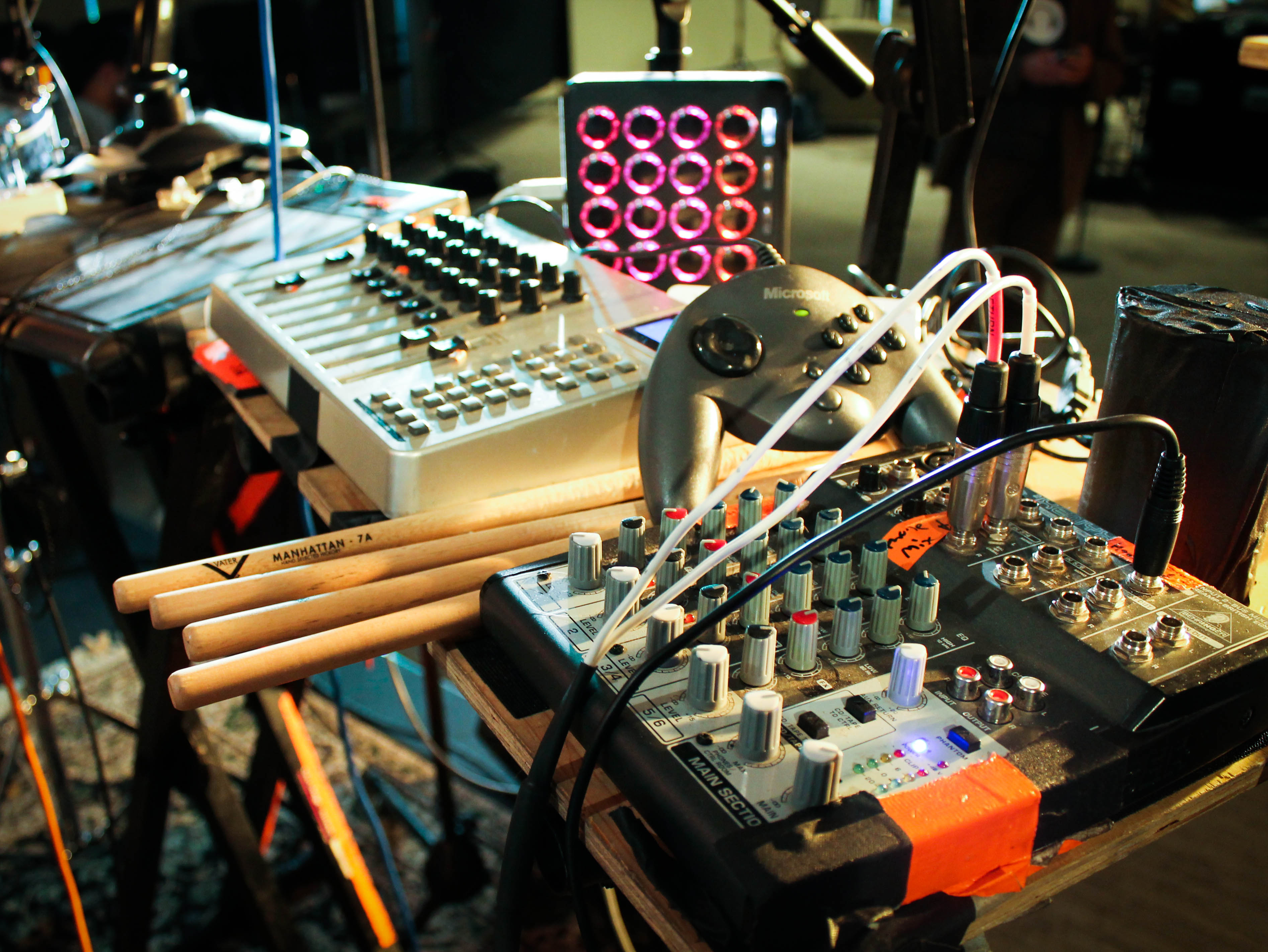
Eclectic electronics
This week, US musician Robert DeLong releases his debut album Just Movement - a record that blends pop songwriter sensibilities with an eclectic mix of thick synths and electro beats.
It’s his unique live shows that brought DeLong to our attention though. On stage he combines live percussion with an assortment of creative MIDI devices - including joysticks and gaming controllers - to create a physical and unique approach to performing live electronic music.
Here DeLong talks us through his setup and explains how his live sets come together.
Also check out Future Music's video tour of Robert's gear, which we've embedded below.
Robert DeLong’s Just Movement is out now.
DeLong: “I utilize a rather diverse range of electronics in my concerts, and though they may seem a bit disjointed, I can assure you that each element serves a specific purpose in the live show.”
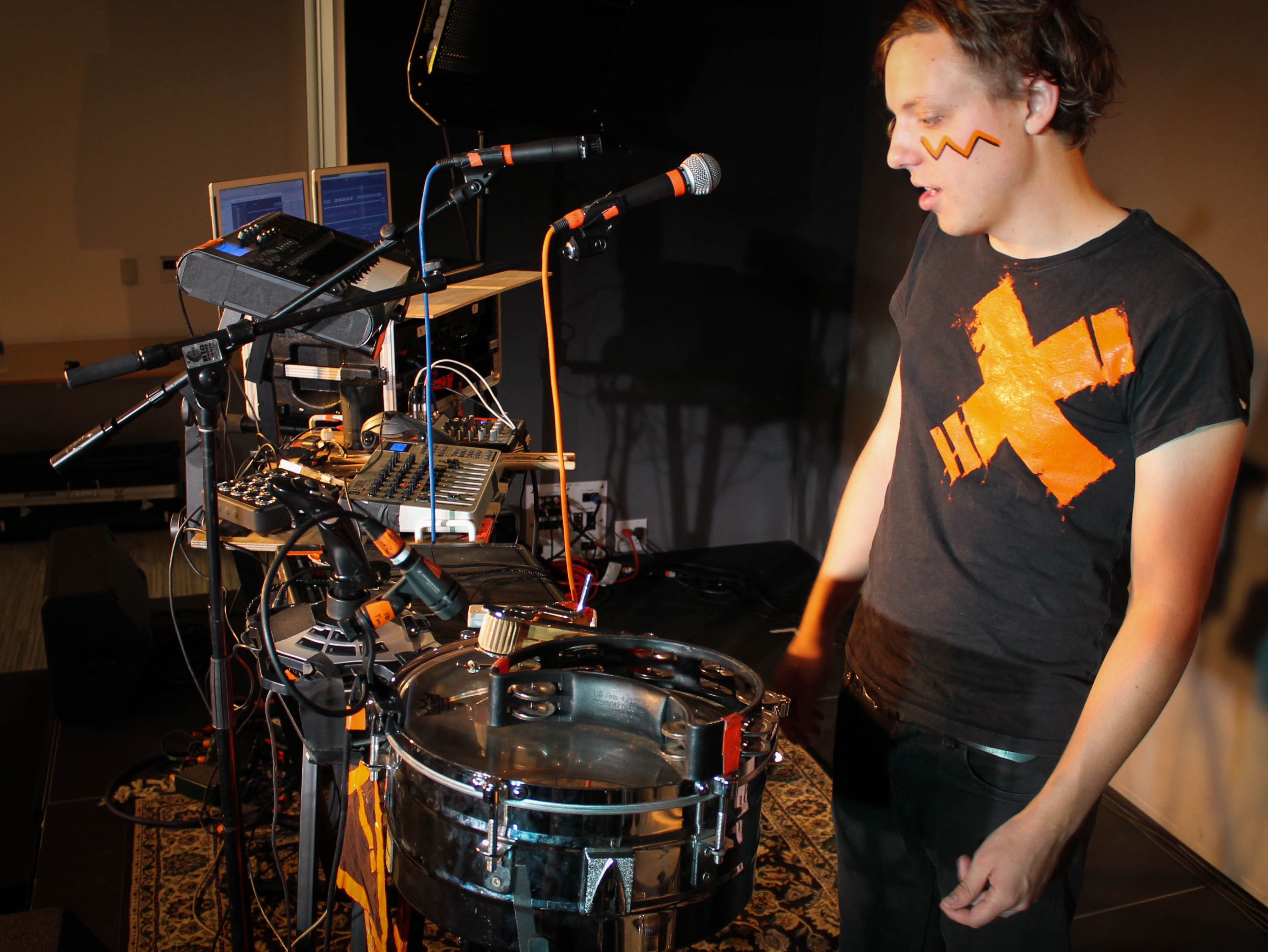
Live percussion
“The most conventional tools employed are a range of percussion and drums.
“Being a drummer by trade, initially, the integration of acoustic percussion seemed natural to me. I use a variety of homemade shakers, a tambourine, ratchet, and timbale. I also utilize a full four-piece drumset as often as space and time allow it, complete with two crash cymbals, hihats, and a 22-inch ride cymbal.”
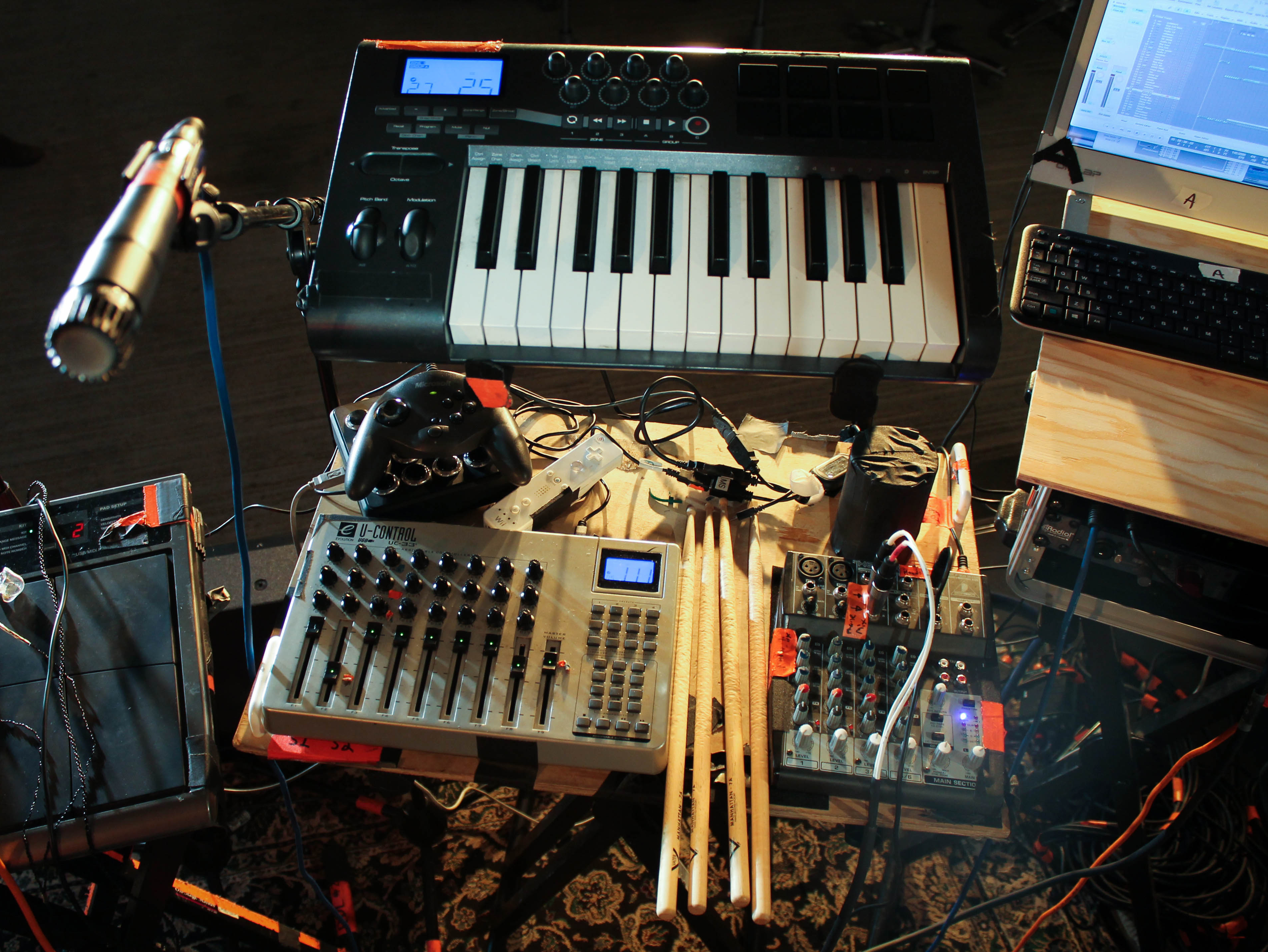
Controllers
“I have a few rather standard MIDI controllers as well. The Evolution UC-33 (now discontinued) sort of acts as my primary control point, with knobs and sliders representing an array of volume, EQ, and effect controls mapped to my software.
“Depending on the song the same controls may completely change their meaning - a slider might control a vocal loop group in one song and a filter cutoff for an a soft-synth in the next.
“I also use an Alesis Controlpad USB drumpad, which is generally a sample trigger device. Sometimes the assignments of the pads become quite convoluted, however, for one pad might mute a group of FX sends while another would trigger some random chord samples.
“Additionally, I use an Axiom 25 key MIDI keyboard, and generally use it for rather standard things, like playing keyboard sounds or triggering drum sounds with the included finger drumpads.”
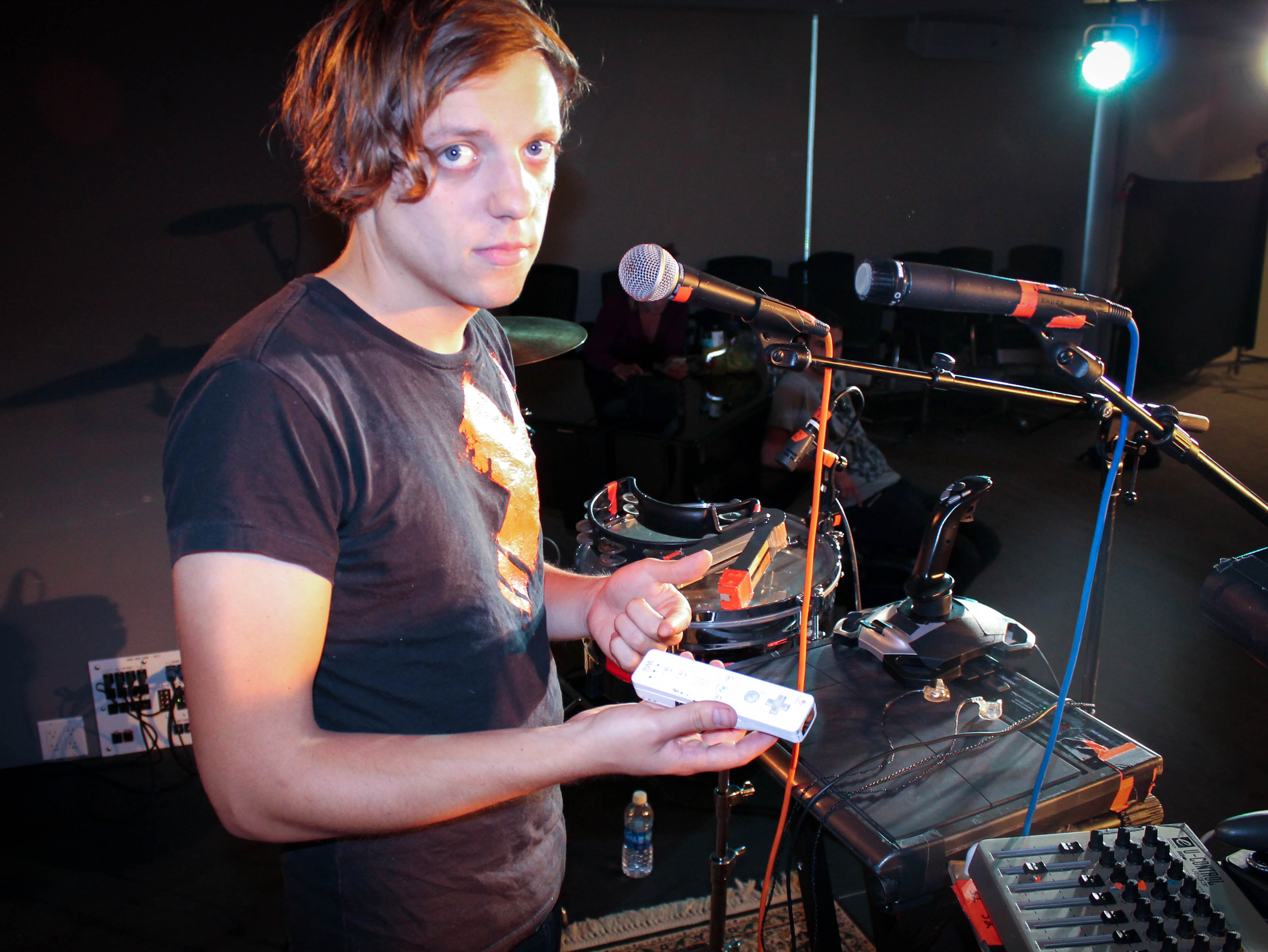
Gaming gear
“Of course, the real unique elements are the game controllers. I use a Novation flight simulator joystick to control any number of synth parameters, (generally pitch, filter cutoff, and LFO speed,) but these things become rather heavily scaled so that the controls are very specific for each iteration.
“I use a Microsoft Sidewinder gamepad as an alternative sample trigger device. I find that, being a rather mediocre keyboard player, I am in some ways better at controller combos than piano fingerings.
“I use a Wii-remote as a controller for vocal delay glitching - as I wave it about I can capture words or phrases, have them repeat, and then speed them up and "cut them" on the fly via the internal gyro.
“I also recently integrated a MIDIfighter, a box with gyros and 4 banks of 16 arcade style buttons that can be mashed about rather violently with interesting results.”
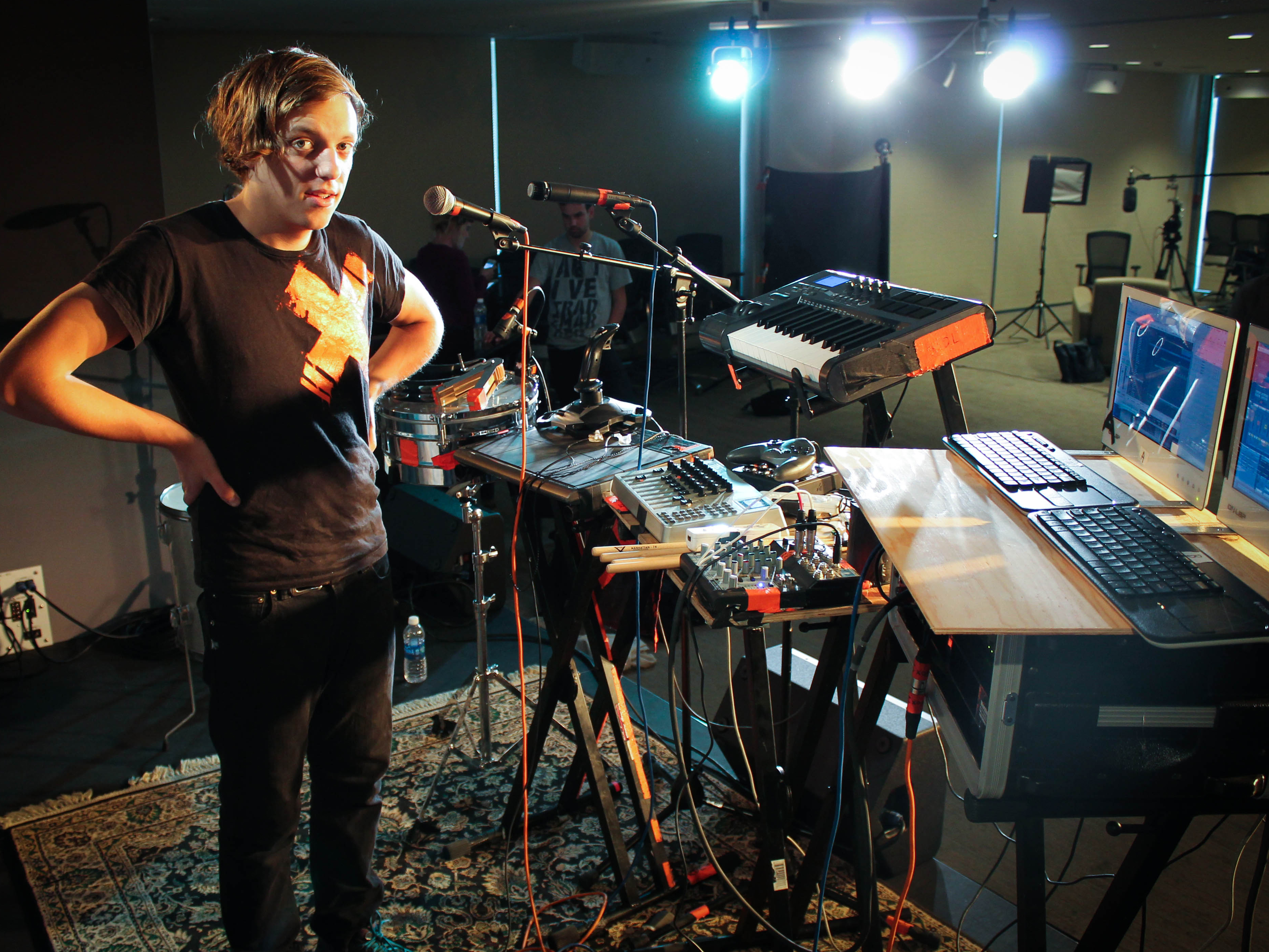
The back end
“There are of course some CPUs lurking behind all the fun gear, a Neve preamp for my vocals, two Saffire Pro 24 audio interfaces, a headphone amp, and two microphones (one heavily processed and effected and one that sends a dry signal to FOH that can also be looped off of), and a whole mess of XLR, SPDIF, MIDI, 1/4 inch, etc. cables.
“The toys in the front of the stage and my performance, however, are the permanent focus - I always wanted to create a live electronic experience that was at once visceral and that would have some obvious visual correlation between the actions performed onstage and the resultant sounds.”
I'm the Managing Editor of Music Technology at MusicRadar and former Editor-in-Chief of Future Music, Computer Music and Electronic Musician. I've been messing around with music tech in various forms for over two decades. I've also spent the last 10 years forgetting how to play guitar. Find me in the chillout room at raves complaining that it's past my bedtime.









